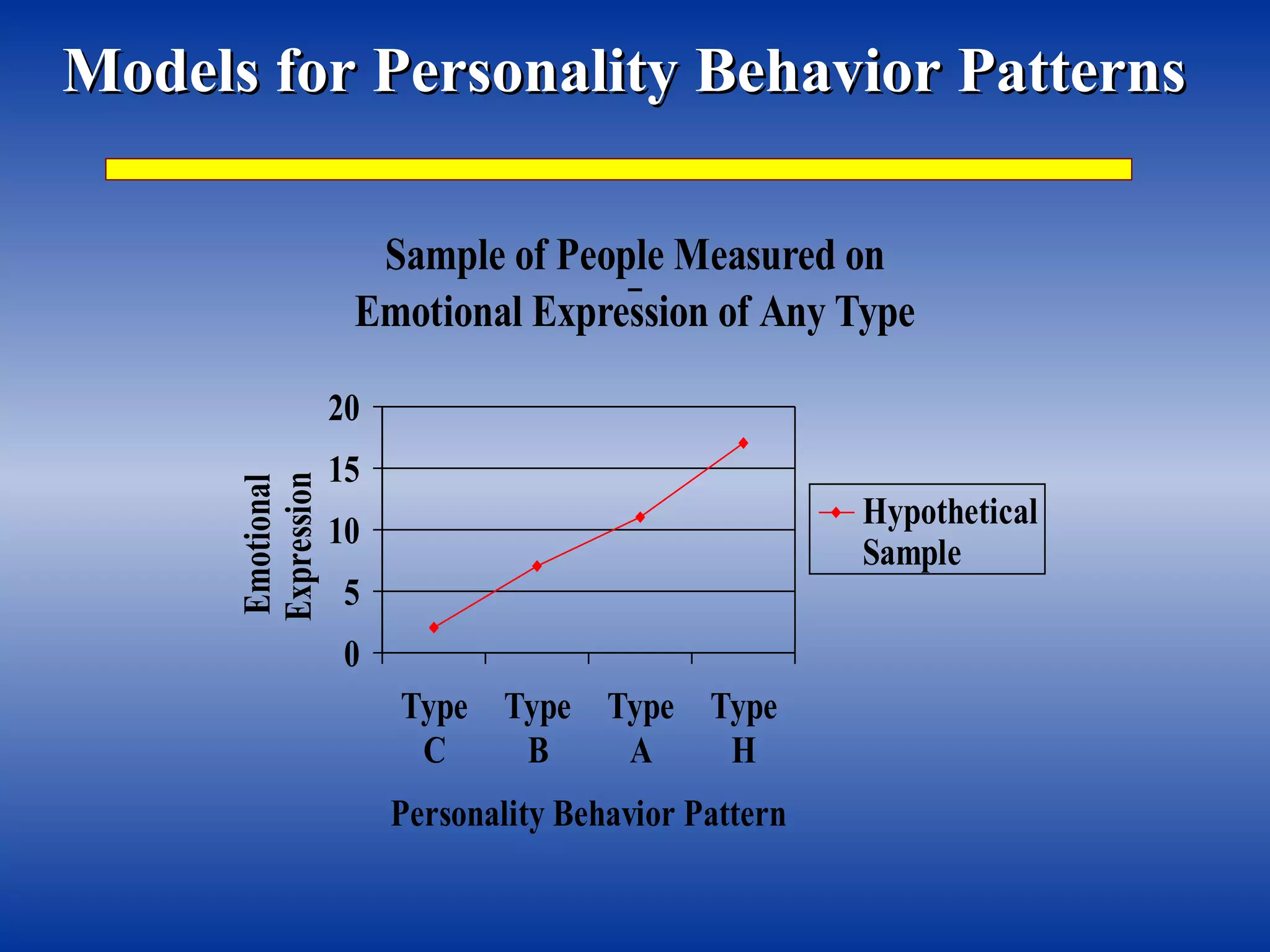This document discusses the relationship between personality and health. It describes different personality types (Type A, B, C) and their associations with stress and disease risk. Type A behavior, characterized by competitiveness and hostility, is linked to cardiovascular disease, especially the trait of hostility. The Type C personality is linked to suppression of emotions and greater cancer risk. Coping strategies like optimism and disclosure can benefit health by reducing stress. Personality influences how people appraise and cope with stressors, trauma, and health threats.























